Nikon AF-S Nikkor 70-200mm f/2.8E FL ED VR Review
-
Ease
of Use -
Sample
Images -
Lens
Specs -
Rating &
Conclusion -
Main
Rivals -
Review
Roundup - Comment
-
More…

Introduction
The Nikon AF-S Nikkor 70-200mm f/2.8E FL ED VR is an FX-format telephoto zoom lens with a versatile 70-200mm focal range and constant f/2.8 aperture. Weighing in at just over 1,400 grams, the Nikon AF-S Nikkor 70-200mm f/2.8E FL ED VR features an inner focusing mechanism with autofocus controlled by a Silent Wave Motor (SWM). The optical formula comprises 22 elements in 18 groups, including 6 ED glass, 1 fluorite lens and 1 HRI lens elements, while Nikon's Nano Crystal and Super Integrated coatings are employed to combat flare and ghosting. The Nikon 70-200mm f/2.8 is equipped with Nikon’s Vibration Reduction II system that allows for up to 4-stops of compensation. The minimum focus distance is 1.1m from the focal plane at all focal lengths and the maximum reproduction ratio is 0.21x. Also featuring an iris diaphragm with 9 rounded blades for a pleasing bokeh, the AF-S Nikkor 70-200mm f/4G ED VR takes 77mm filters and comes with an HB-78 lens hood and a CL-M2 lens case as standard. The Nikon AF-S Nikkor 70-200mm f/2.8E FL ED VR lens is available now priced at £2649.99 / $2799.95.
Ease of Use
Weighing 1430g, the AF-S Nikkor 70-200mm f/4G ED VR is 110g lighter than its predecessor. It measures 202.5mm in length. We found that although it balanced well on the Nikon D810 body provided for this review, using it handheld for more than a couple of hours soon grew tiring.
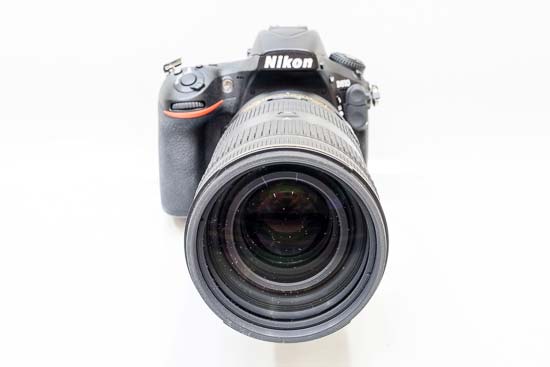 The Nikon AF-S Nikkor 70-200mm f/2.8E FL ED VR lens mounted to a Nikon D810 body
The Nikon AF-S Nikkor 70-200mm f/2.8E FL ED VR lens mounted to a Nikon D810 body
In terms of features, the Nikon AF-S Nikkor 70-200mm f/2.8E FL ED VR has quite a lot to offer. It has an internal focus (IF) mechanism and a Silent Wave Motor, allowing you to use manual focus even when you are in auto-focus mode (denoted with the usual M/A sign on the lens barrel).
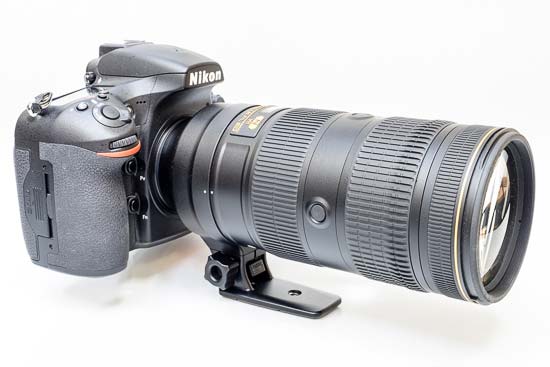 Front of the Nikon AF-S Nikkor 70-200mm f/2.8E FL ED VR, isometric view
Front of the Nikon AF-S Nikkor 70-200mm f/2.8E FL ED VR, isometric view
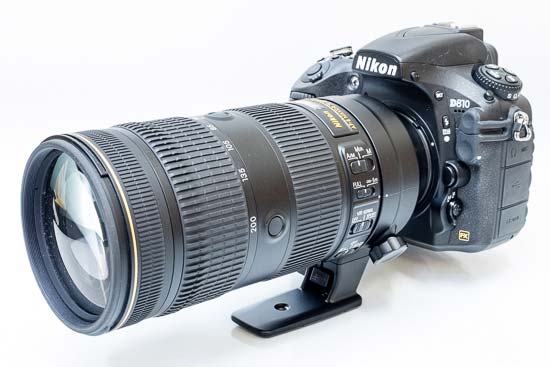 Front of the Nikon AF-S Nikkor 70-200mm f/2.8E FL ED VR, isometric view
Front of the Nikon AF-S Nikkor 70-200mm f/2.8E FL ED VR, isometric view
It also features Nikon's Vibration Reduction (VR) system, which offers 4-stops of compensation. Two modes are available, Normal for everyday shooting, and Sport for shooting exceptionally fast action or subjects that move erratically. Vibration Reduction can be used in combination with a tripod.
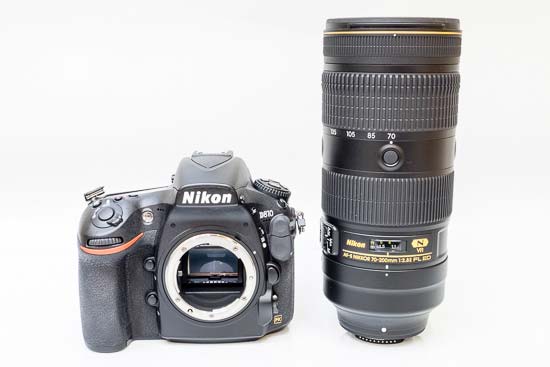 The Nikon AF-S Nikkor 70-200mm f/2.8E FL ED VR alongside the D4
The Nikon AF-S Nikkor 70-200mm f/2.8E FL ED VR alongside the D4
Build quality is similar to the majority of Nikon lenses we have tested so far. Most exterior parts are made of plastic, but that doesn't stop the lens from feeling solid and substantial in the hand.
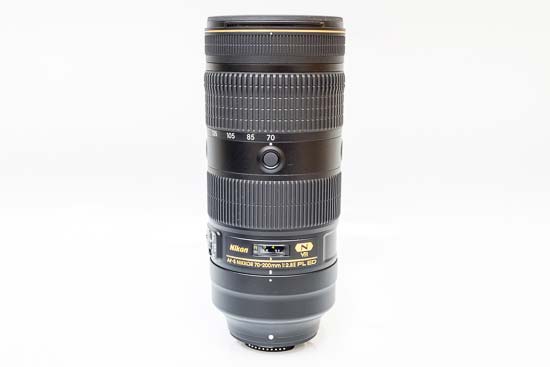 Front of the Nikon AF-S Nikkor 70-200mm f/2.8E FL ED VR
Front of the Nikon AF-S Nikkor 70-200mm f/2.8E FL ED VR
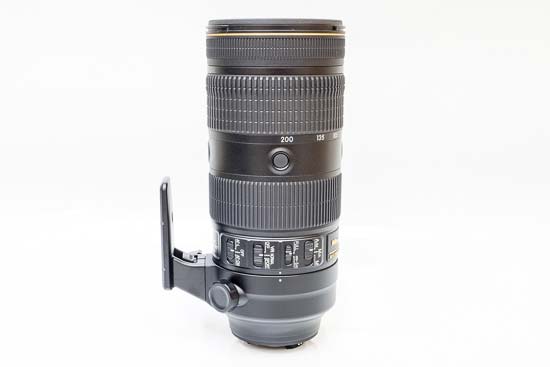 Front of the Nikon AF-S Nikkor 70-200mm f/2.8E FL ED VR
Front of the Nikon AF-S Nikkor 70-200mm f/2.8E FL ED VR
Zooming is internal, so the front doesn't extend when zooming from 70mm to 200mm or back again. The ribbed zoom ring is sufficiently wide and neither too stiff nor too loose. The position of the zoom and focus rings has been reversed compared to the lens’ predecessor, with the zoom ring at the front of the barrel and the focus ring in the middle. Nikon claim that this design decision results in more balanced handling, but it's at best confusing until you've spent a lot of time using the lens.
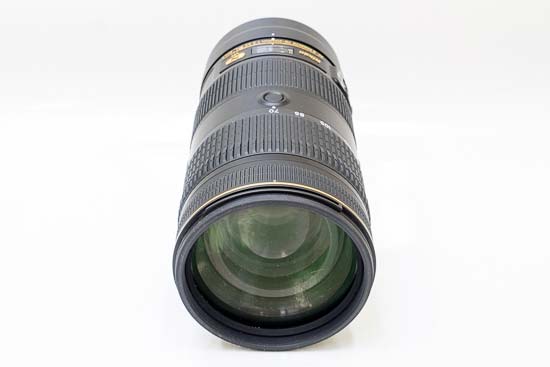 Front of the Nikon AF-S Nikkor 70-200mm f/2.8E FL ED VR
Front of the Nikon AF-S Nikkor 70-200mm f/2.8E FL ED VR
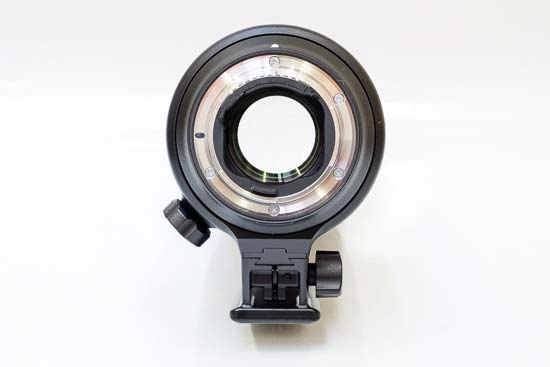 Rear of the Nikon AF-S Nikkor 70-200mm f/2.8E FL ED VR
Rear of the Nikon AF-S Nikkor 70-200mm f/2.8E FL ED VR
The lens accepts filters via a standard 77mm thread around the – non-rotating – front lens element, which is great news for those who like to use polarisers or ND grads.
 Isometric view of the Nikon AF-S Nikkor 70-200mm f/2.8E FL ED VR
Isometric view of the Nikon AF-S Nikkor 70-200mm f/2.8E FL ED VR
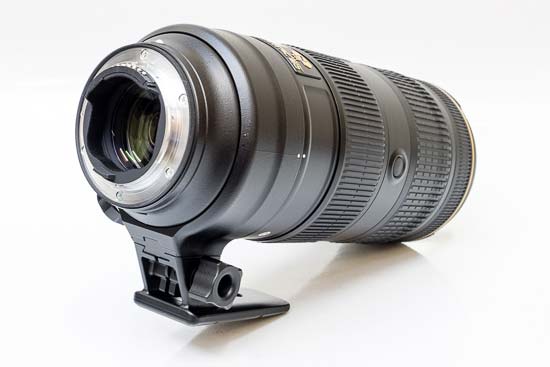 Isometric view of the Nikon AF-S Nikkor 70-200mm f/2.8E FL ED VR
Isometric view of the Nikon AF-S Nikkor 70-200mm f/2.8E FL ED VR
The Nikon AF-S Nikkor 70-200mm f/2.8E FL ED VR ships with the plastic HB-78 bayonet hood and the CL-M2 semi-soft case. Note that there is a a dedicated tripod collar ring included with the lens.
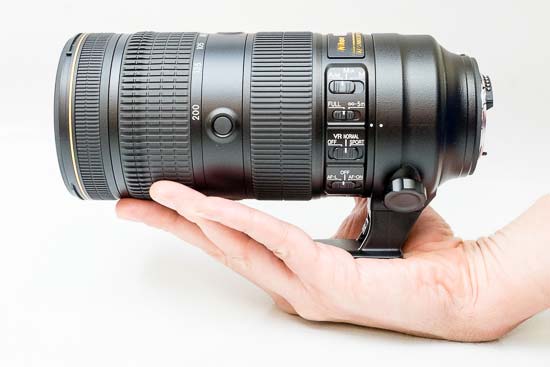 The Nikon AF-S Nikkor 70-200mm f/2.8E FL ED VR in-hand
The Nikon AF-S Nikkor 70-200mm f/2.8E FL ED VR in-hand
There is a distance scale sheltered behind a window, but there are no depth-of-field marks and no infrared focus index either. The Nikon AF-S Nikkor 70-200mm f/2.8E FL ED VR has 4 configurable buttons on the barrel which make it easier to engage autofocus or AF Lock functions with your thumb while holding the lens.
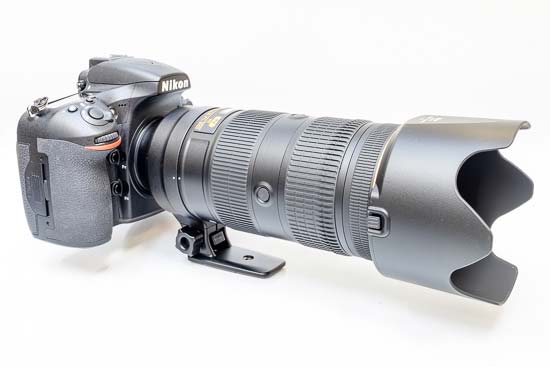 The Nikon AF-S Nikkor 70-200mm f/2.8E FL ED VR with the HB-78 lens hood fitted
The Nikon AF-S Nikkor 70-200mm f/2.8E FL ED VR with the HB-78 lens hood fitted
The lens boasts a weather sealed magnesium alloy lens barrel and is extensively sealed to protect from dust and water, so it should survive exposure to all weathers.
Focal Range
One of the main attractions of this lens is the versatile focal range that goes from moderate to close-up telephoto.
At the 70mm end of the zoom range, the angle of view is 34° 20'.
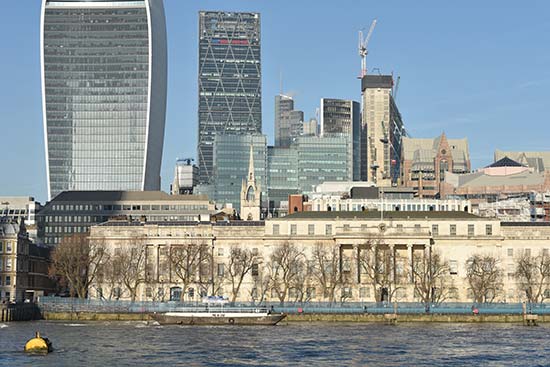 Field of view at 70mm
Field of view at 70mm
At the 200mm end, the angle of view narrows to 12° 20'.
 Field of view at 200mm
Field of view at 200mm
Focusing
In Spot AF mode, the Nikon AF-S Nikkor 70-200mm f/2.8E FL ED VR lens focuses very quickly, and if you switch your camera to Continuous AF you'll also be surprised at how well it copes with fast-moving subjects. Thanks to a Silent Wave Motor, the auto focus operation is very quiet, and instant manual-focus override is available at all times. The ridged focus ring is quite wide and more than adequate for the job. It requires an approximately 180° turn to get from the close-focus point to infinity. Note that there is a hard stop at both ends of the range. There's a switch on the lens barrel for changing the focusing distance between Full (1.1m-Infinity) and 5m-Infinity.
Distortion and Vignetting
The Nikon AF-S Nikkor 70-200mm f/2.8E FL ED VR didn't suffer from distortion at either end of the zoom range, and vignetting is well controlled too.
 Distortion at 70mm
Distortion at 70mm
 Distortion at 200mm
Distortion at 200mm
Chromatic Aberrations
Chromatic aberrations, typically seen as purple or blue fringes along contrasty edges, can be noticed in photos taken at the maximum aperture but they aren't too excessive, and tend to go away upon stopping down.
 |
 |
Macro
The Nikon AF-S Nikkor 70-200mm f/2.8E FL ED VR lens has a close-focus point of 1.1m throughout its zoom range (measured from the sensor plane rather than the front lens element). Nikon claims a maximum magnification of 0.21x at the telephoto end.
 Close-up performance
Close-up performance
Bokeh
Bokeh is a word used for the out-of-focus areas of a photograph, and is usually described in qualitative terms, such as smooth / creamy / harsh etc. In the AF-S Nikkor 70-200mm f/2.8E FL ED VR lens, Nikon employed an iris diaphragm with 9 rounded blades for a more pleasing rendering of the out-of-focus areas. Based on what we have seen, we can say that they largely succeeded. Below you'll find some examples, but you are also encouraged to check out our sample images.
 |
 |
 |
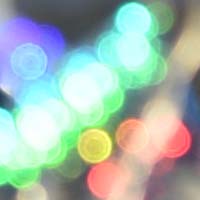 |
Sharpness
In order to show you how sharp this lens is, we are providing 100% crops on the following pages.
-
Ease
of Use -
Sample
Images -
Lens
Specs -
Rating &
Conclusion -
Main
Rivals -
Review
Roundup - Comment
